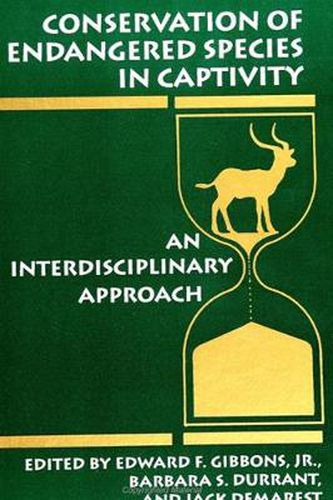Readings Newsletter
Become a Readings Member to make your shopping experience even easier.
Sign in or sign up for free!
You’re not far away from qualifying for FREE standard shipping within Australia
You’ve qualified for FREE standard shipping within Australia
The cart is loading…






This multi-disciplinary approach to conservation of endangered species in captivity is organized taxonomically and by scientific discipline. The seven taxonomic groups included are invertebrates; fish, reptiles and amphibians, birds, marine mammals, primates, and other mammals. Within each taxonomic group, four scientific disciplines are explored: conservation, reproductive physiology, behavior, and captive design. Conservation chapters summarize the status of the taxonomic group both in the wild and in captivity. Reviewed in the reproductive physiology chapters are anatomy, endocrinology and physiology for females and males of the taxonomic group. In the section on behavior the functions of captive animal research, the methods used, and the problems encountered are discussed. And, in examining captive design the authors provide a general historical outline of the philosophies, trends, and scientific issues for the targeted taxonomic group.
$9.00 standard shipping within Australia
FREE standard shipping within Australia for orders over $100.00
Express & International shipping calculated at checkout
This multi-disciplinary approach to conservation of endangered species in captivity is organized taxonomically and by scientific discipline. The seven taxonomic groups included are invertebrates; fish, reptiles and amphibians, birds, marine mammals, primates, and other mammals. Within each taxonomic group, four scientific disciplines are explored: conservation, reproductive physiology, behavior, and captive design. Conservation chapters summarize the status of the taxonomic group both in the wild and in captivity. Reviewed in the reproductive physiology chapters are anatomy, endocrinology and physiology for females and males of the taxonomic group. In the section on behavior the functions of captive animal research, the methods used, and the problems encountered are discussed. And, in examining captive design the authors provide a general historical outline of the philosophies, trends, and scientific issues for the targeted taxonomic group.